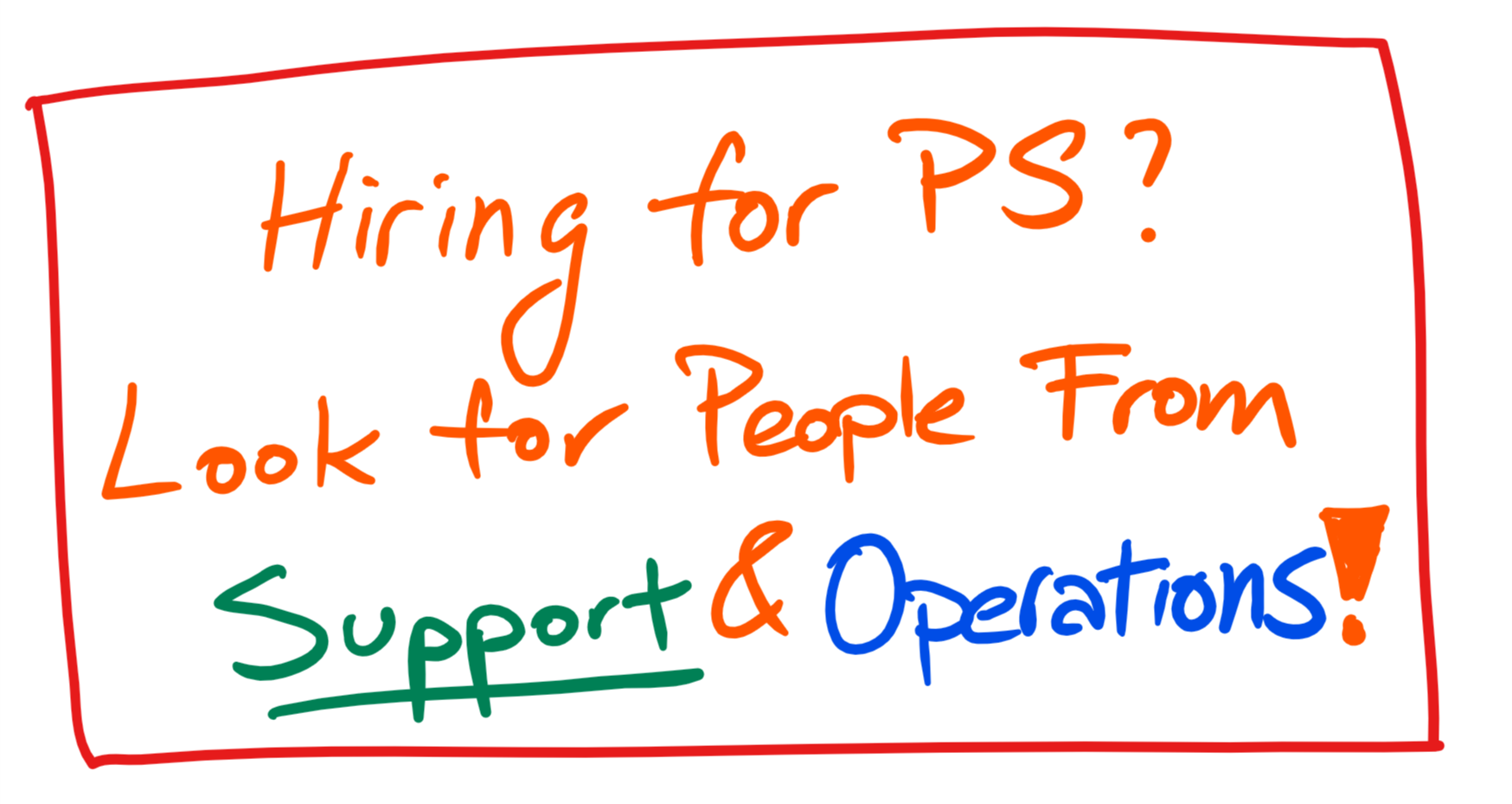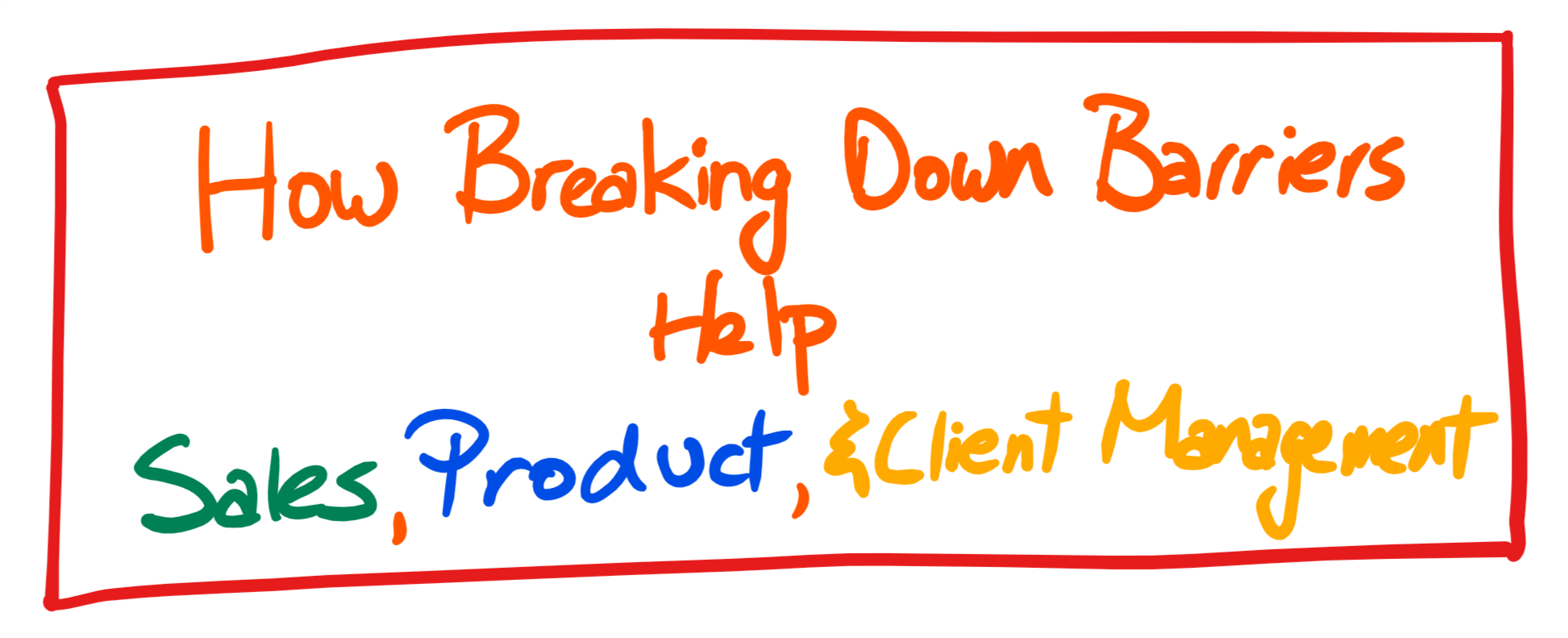Blogs from 2017
Hiring into a PS team is hard. Most of the time, we beat our heads at a wall to find candidates that do the same things we do. I've had great success at building PS teams with those from support and operations organizations. Read on to find out my 4 reasons why I think they make great PS colleagues!
As technical consultants, our relationships with our clients tend to be very transactional. They call us, we solve their problems. We can do much better... and we can start by being better human beings. What does that mean? Read on to find out!
Hiring for Professional Services teams tends to be difficult. We don't seem to find as many professional services candidates to fill our teams. Don't blame a smaller hiring pool of generalists! Start finding great people who share our passion to be great trusted advisors and our drive to learn and grow beyond a single discipline. Read to find out more!
Teams that compete and win all have one thing in common: They train. They train hard, and they train often. So, why should our team be any different? Read on to find out how intense team training focusing on developing and improving our synaptic responses can be a great way to spread knowledge and build confidence amongst ourselves and our clients.
How should you lead when you're joining a team of incredibly talented people, all of whom are definitely smarter than you in almost every conceivable way? For me, I start with humility. I lay out my deficiencies to the team, and I help the team help me scaffold up to be a better leader for them.
When we start our meetings with asking your team to "stay positive", we are setting the groundwork for terrible discussions. Why is that? Read on to find out why a simple request is a powerful order to stifle debate and dissent, and what we as good leaders should say instead of foster true honesty and collaboration.
Why is pattern recognition important for services teams? How does our pattern recognition help our organization figure out anticipatory problems? Where do we get started? We dive into the 3-step process on how professional services teams can take our learnings, make it relevant, and affect positive change for our clients.
Part III on our series on breaking down barriers. We all know why it's a good idea to work more closely with our colleagues, and how we all benefit. This week, I lay out 4 concrete exercises that you can run with your sales and product teams to build rapport, learn from one another, and contribute to each other's success.
Part II of the breaking down barriers series. We look at how our skills in pattern recognition of client and industry trends, articulation of technical pains, and identification of chronic pain can help our colleagues in adjacent teams like sales, product management, and client management.
Working in silos is detrimental to your health! Here are 4 reasons why working with other teams is much better than working alone in a departmental vacuum.
What happens when we start giving away our work for free? Clients get the wrong idea of the value we bring to our table, commitment takes a hit, and our internal teams start asking questions on how we're contributing to our organization. We look at 3 reasons why we shouldn't be giving away our work, and a tactic to assign value without assigning cost.
What are the reasons why some projects stay on track while others derail? We look at a couple of factors outside our influence (lack of options and the fear of missing out), and one strategy we can all use (alignment with our client's business roadmaps) to ensure our projects always keep moving forward.
Part 2 of the series on Pain. When our clients come to us with immediate pains, it presents an opportunity for us to mine deeper to find out their big anticipatory pains. Forming an agreement that bigger pains exist, correlating anticipatory pains to their immediate hurt, and building a solution that address the short-term first will help you build the trust needed for your clients to come to you with their biggest business problems.
PS teams exist to identify, diagnose and solve client pain. In part 1 of a 2 part series on client pain, we break down the 3 types of client pain and lay out why one specific pain called anticipatory pain should be the single biggest focus of any PS team.
Great meetings results in consensus built, decisions made, and directions agreed to. Bad meetings not only undermine consensus and decisions, but it also destroys team trust resulting in resentment, grudges, and apathy. Here are my 2 rules to great meetings that help teams leave nothing on the table so they can foster participation, understanding, and cooperation.
A PS team can be greater than the sum of its parts! Building and growing a cohesive PS team takes effort and hard work, but there are 3 really good reasons to do it: it promotes learning, allows for greater pattern recognition of problems, and encourages adherence to standards. Learn how to help build a cohesive PS team with 4 simple tactics!
Measuring the success of a professional services team can be nebulous. Resist the urge to take the easy route of tracking dollars or "time spent" alone! Measure the team based on how they are executing on the three fundamentals of a great professional services team: How well are they diagnosing pain? How objective are they in solving client pain? And finally, how strong are the long-term partnerships we are striving to develop and maintain?
With unique objectives, measurements, and a strong voice at the management table, structuring an independent professional services team strengthens an organization's ability to continuously focusing on doing what's right for every client. It's definitely more work than to have a PS team report to sales, marketing, product, or another organizational unit, but in the long run it's more rewarding and sustainable.
There's a difference between being a consultant and a trusted advisor. The big difference between the two is a genuine fearlessness that makes the trusted advisor treasured by clients everywhere. Be that trusted advisor: listen, ask, and respond fearlessly.
Being a great trusted advisor to your clients should be the goal of every professional services consultant. It all starts with listening with an empathetic ear, asking the pointed questions, and responding fearlessly.
Part four in our series on separating deliverables from effort. We conclude with tips on making the transition to structure a team that collaborates on quality deliverables.
Part three of the four part series on the operating model of separating deliverables from effort. Knowing what the model looks like, we now break down the benefits of the model.
Part two of a four part series on making the case for separating the notions of deliverables and effort. We look into a real life trial of this operating model, and examine the results of the trial.
Part one of four on making the case to separate the notions of deliverables and effort. It's an operational model where the team works together on all aspects of PS work, but each role is uniquely responsible for their own deliverable. Part 1 breaks down what the model looks like.
Professional services has the potential of generating a cycle of endless value within and outside the organization. Instead of approaching engagements as purely transactional, taking the time to assess pain, build great solutions, commit to a plan of action, deliver the action plan, and engage throughout the process will foster great partnerships that begs for the PS cycle to loop over and over again.
Professional Services isn't a team with a homogeneous role. It is a team of people that wear different hats: solutioner, planner, executor, and supporter.
It's not enough to understand what we do, but the reasons why we do what we do. We exist to understand client pain, to be trusted advisors, and to build great partnerships with the clients we work with.
What does professional services do? It seems the answer to that question is never consistent than the answers you get from "what does development do?" or "what does sales do"? Perhaps it's because every organization defines PS differently. But just because every PS team is defined uniquely doesn't mean there isn't a common thread.



























